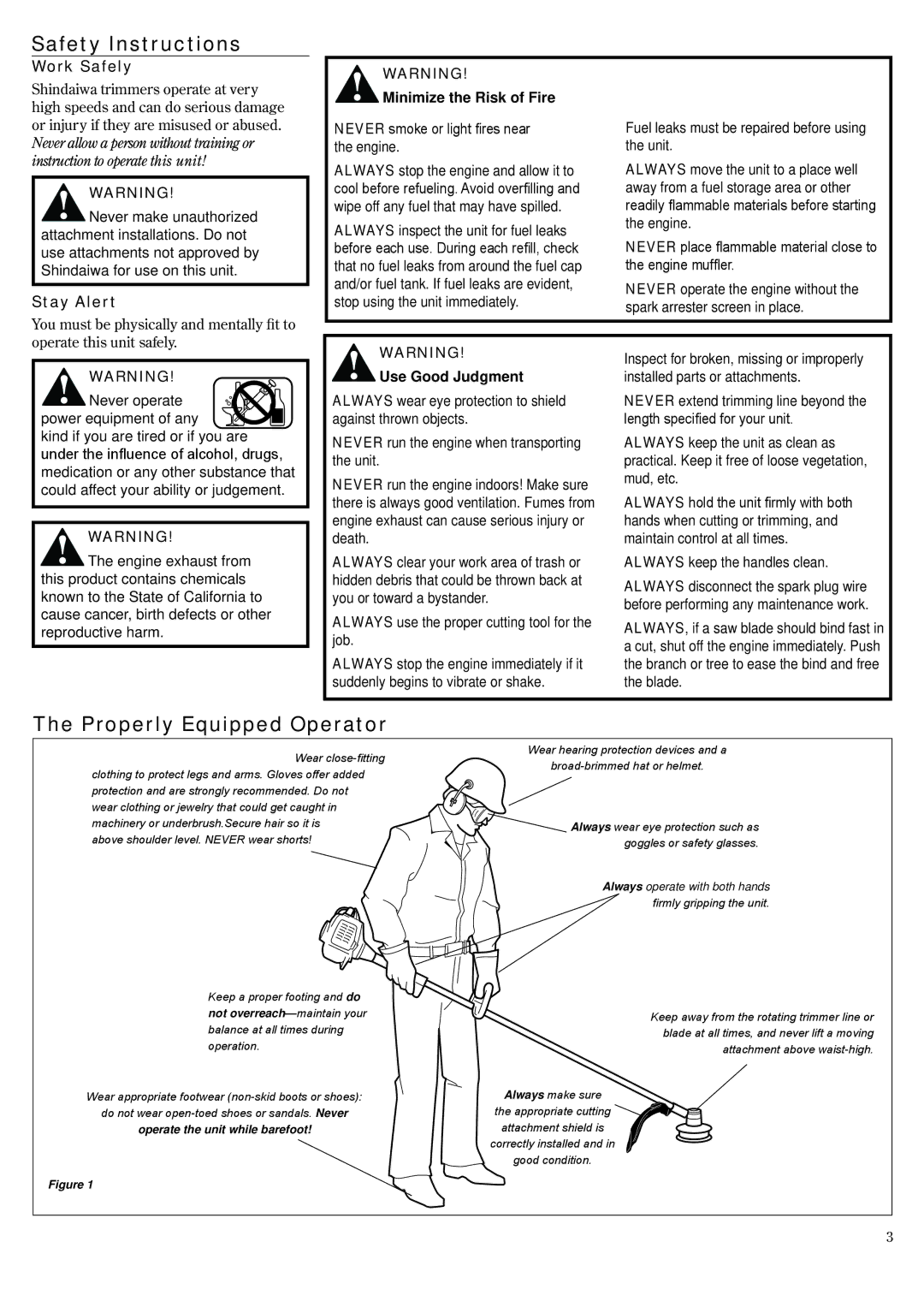T2510X, 82014 specifications
The Shindaiwa 82014 and T2510X are notable products in the landscape of outdoor power equipment, emblematic of Shindaiwa's commitment to quality and performance. Designed to meet the rigorous demands of professional landscapers and gardeners, these models boast a combination of advanced technology, user-friendly features, and exceptional reliability.The Shindaiwa 82014 is a powerful, two-stroke, backpack blower. It features a robust engine that delivers an impressive air volume and velocity, making it ideal for clearing leaves, debris, and other materials from large areas quickly and efficiently. The blower’s lightweight design and ergonomic harness distribute weight evenly, reducing fatigue during extended use. Additionally, the 82014 is equipped with an innovative starting system that makes it easy to start with minimal effort, ensuring that users can get to work quickly without the hassle of cumbersome pull cords.
This model also showcases a low-noise engine, making it compliant with stringent noise regulations, which is especially beneficial for urban landscaping tasks. The engine's efficient fuel consumption enhances runtimes, thereby increasing productivity on the job. The powerful airflow can be adjusted with a simple throttle control, providing versatility for various tasks, whether it’s gentle blowing for flower beds or strong gusts for heavy debris.
On the other hand, the T2510X is a high-performance trimmer, known for its smart design and functionality. This model features a professional-grade, 25.4cc engine that ensures robust power while maintaining low emissions and fuel consumption. The T2510X incorporates a rapid load trimmer head, allowing users to reload line quickly without any tools, thus minimizing downtime and enhancing operational efficiency.
The adjustable handle on the T2510X provides comfort and control, allowing users to tackle any trimming task while maintaining a firm and comfortable grip. Furthermore, the machine is equipped with an anti-vibration system, which helps to reduce operator fatigue and improves overall comfort during prolonged usage.
Both models underscore Shindaiwa’s dedication to delivering equipment that not only meets but exceeds the expectations of professionals in the landscaping industry. With cutting-edge features, a focus on operator comfort, and powerful performance, the Shindaiwa 82014 and T2510X are indispensable tools for anyone looking to achieve optimal results in landscape maintenance and management.

